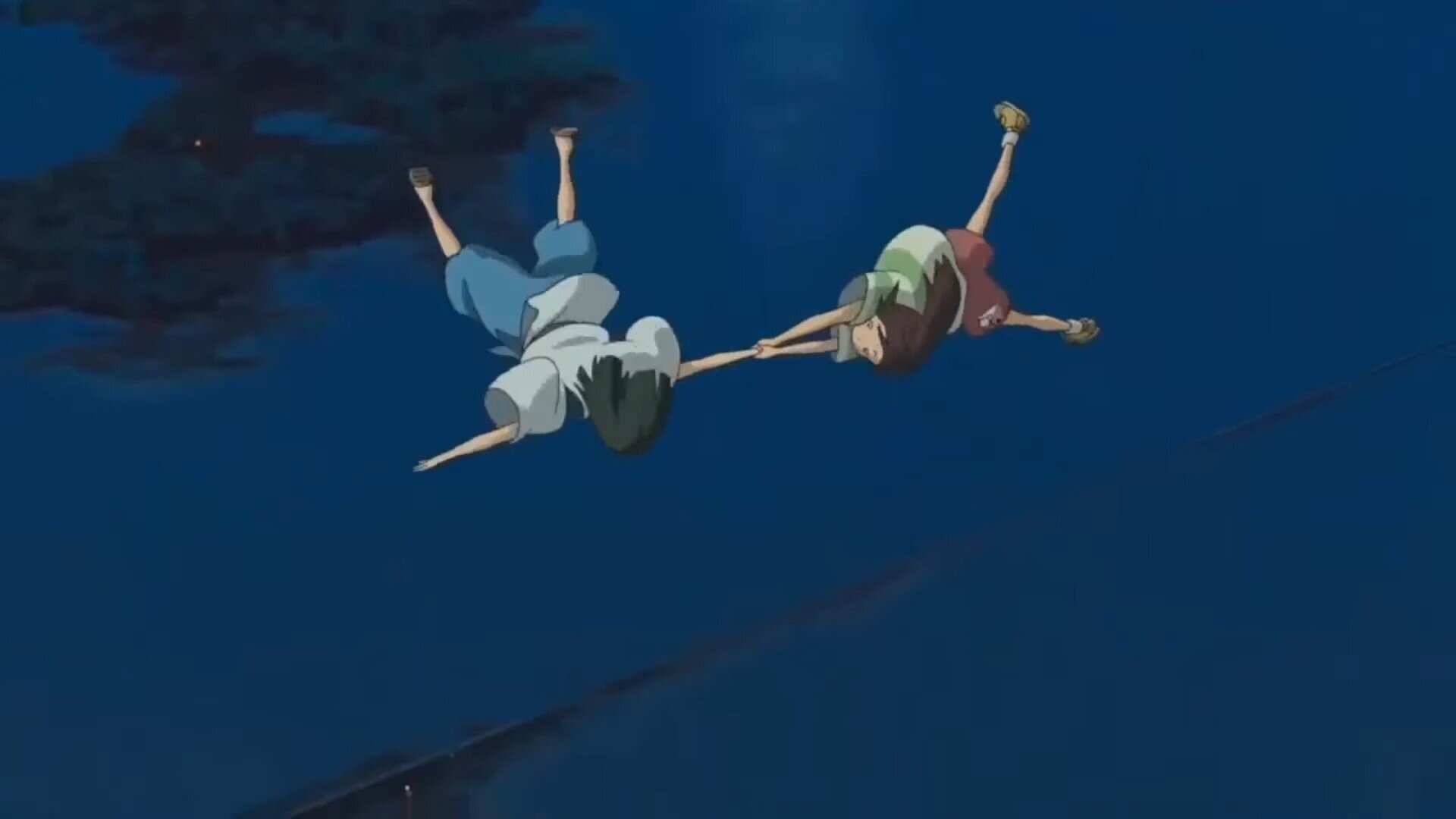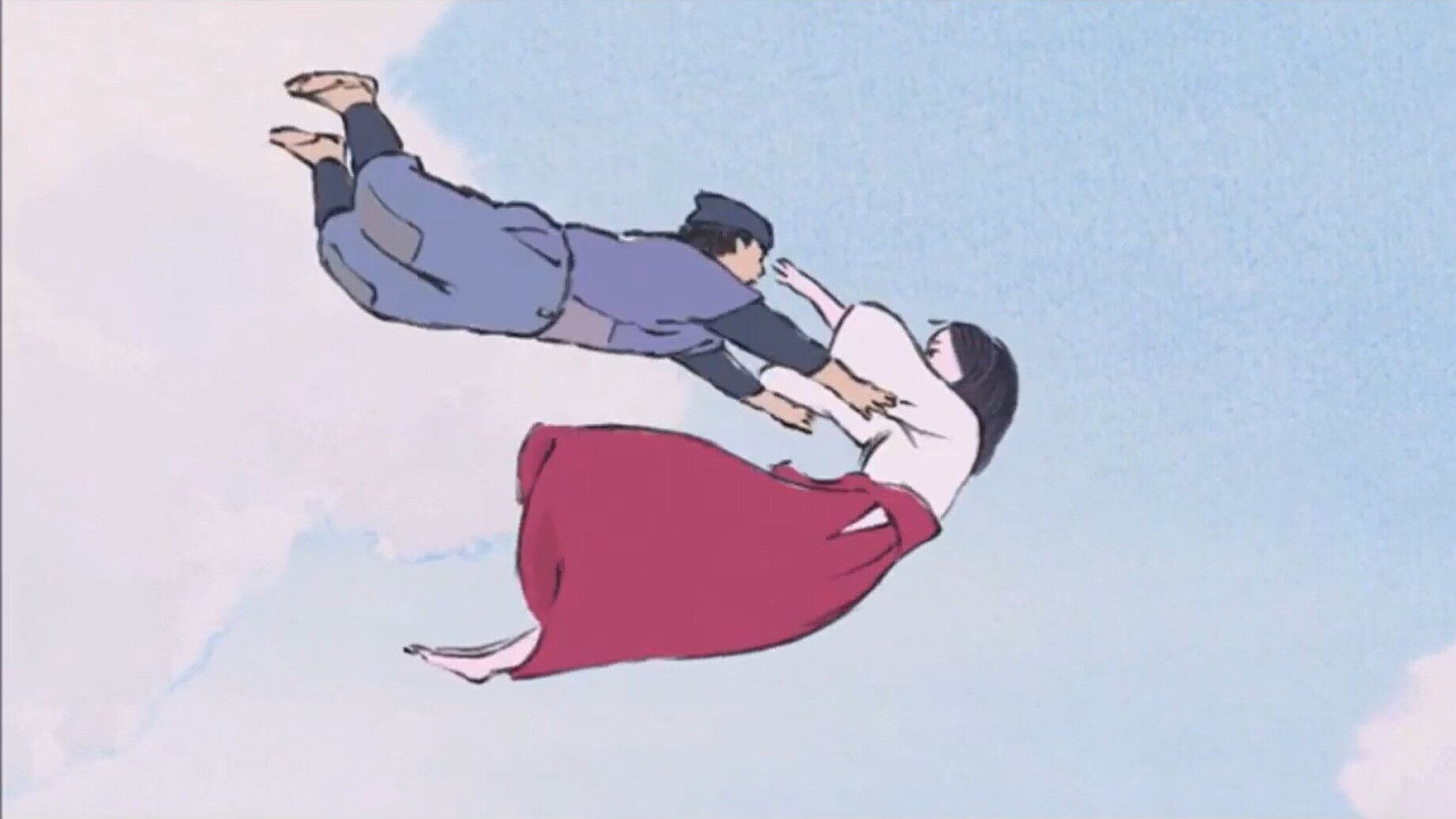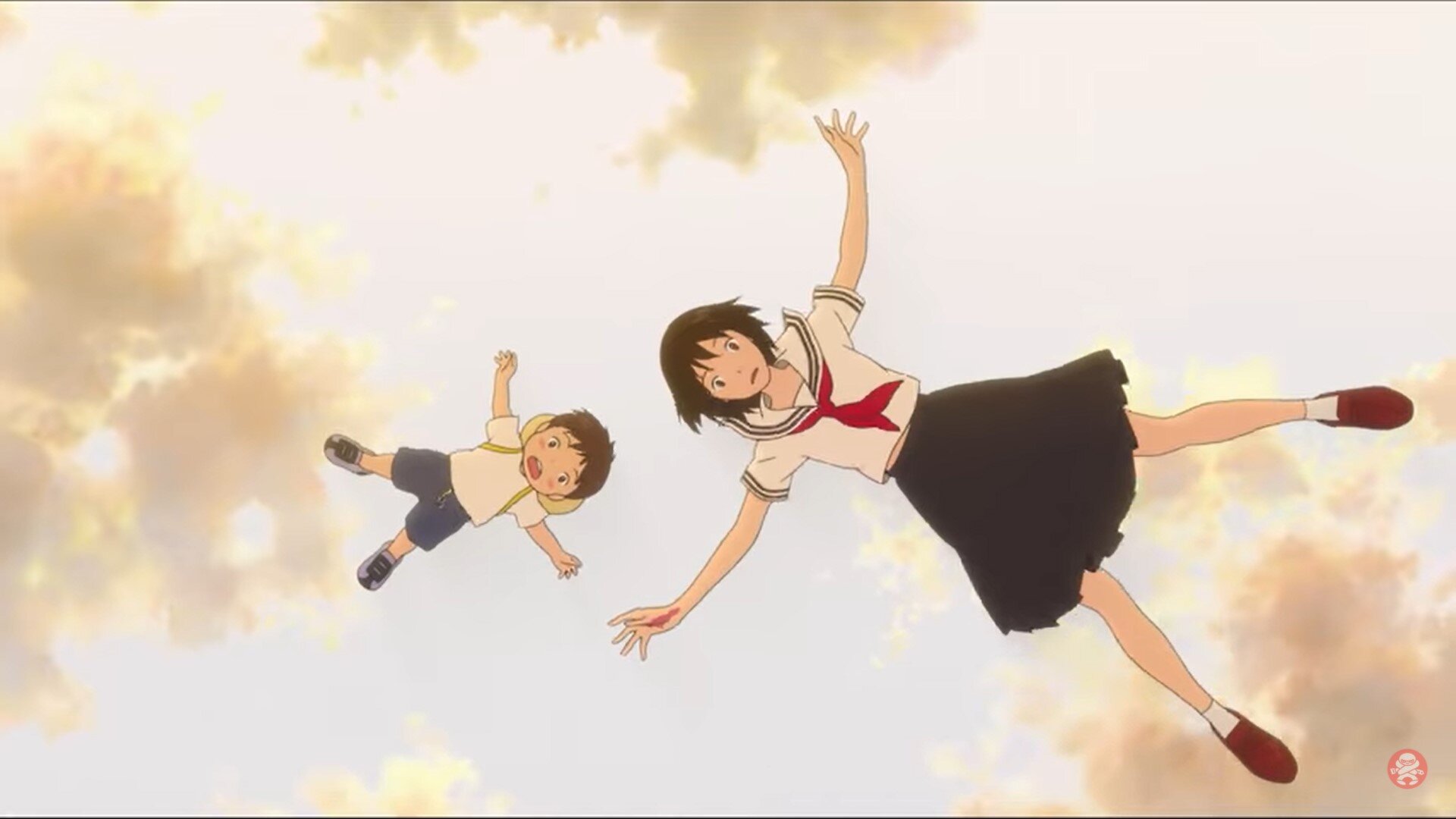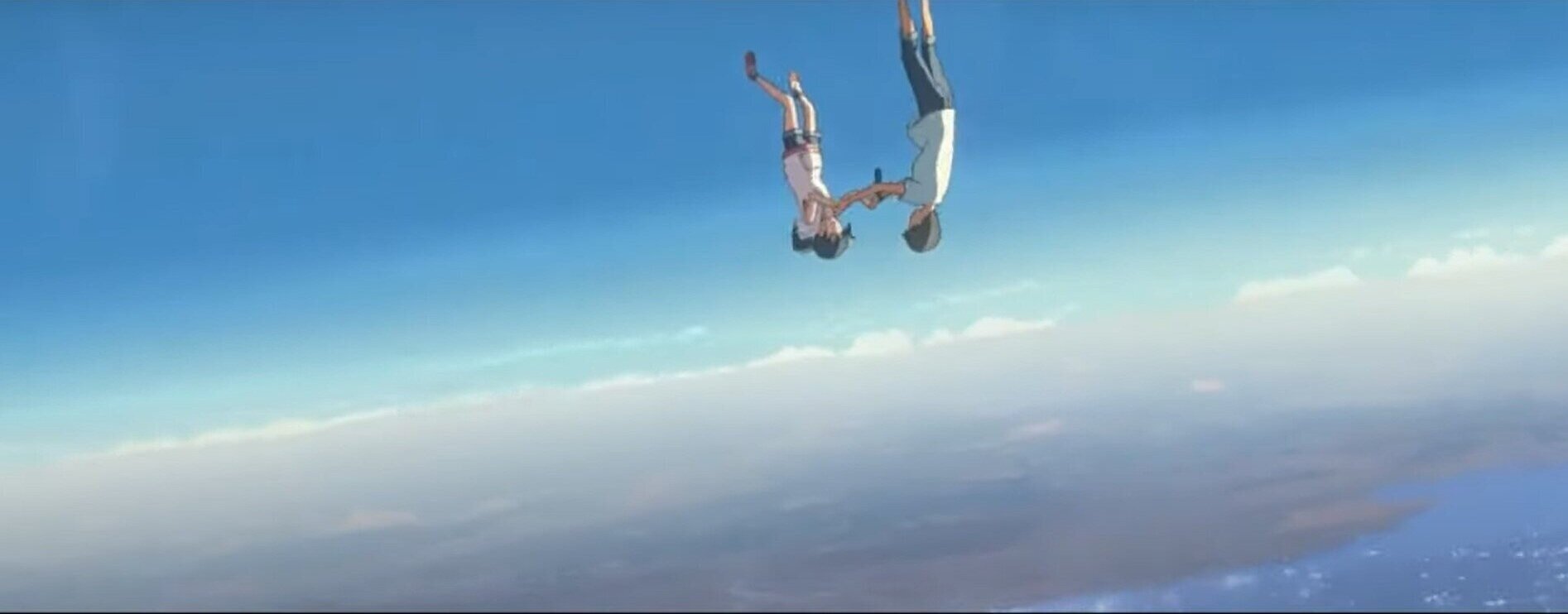A boy and girl transcend reality by falling with style
I’ve noticed a trope that shows up in a few anime movies that I haven’t heard people talk about much. I’ve tried to find writing online about it, but haven’t found much (1). So despite knowing relatively little about anime or Japanese culture generally, I figured I would give a shot at documenting this.
The trope is falling as a representation of transcending reality.
In its strong version the trope takes the following form: Towards the end of a movie, the a shift is made into a suspension of physical reality as a boy and girl fall/fly through the air and have a moment of emotional catharsis. This happens in the following four movies (sorry for the poor quality video links):
I find it curious that all four of these movies have such visually similar scenes, serving fairly similar functions in their movies (a boy and a girl are forging some connection while falling/flying, romantic or otherwise) (2).
What accounts for it?
One potential explanation: These scenes in Tale of Princess Kaguya, Mirai, and Weathering with You are all paying homage to Spirited Away, which was made first, is extremely influential, and has probably the most memorable falling-as-catharsis scene.
Another factor could be that there tendency in Japanese anime to depict characters crossing a bridge into non-reality in order to achieve an emotional effect. Perhaps falling is just a very visually striking and emotionally-resonant way of showing this transcendence (3). It’s possible that the reason this seems to show up more in anime than in American animation is because of a sense in Japanese culture that the barrier between the physical and spiritual world is pretty permeable. I’m really talking out of my depth here, but this would match with what the Japanese author Haruki Murakami says about leaving the physical world:
“I can’t always see the borderline between the unreal world and the realistic world…In Japan, I think that other world is very close to our real life, and if we decide to go to the other side it’s not so difficult. I get the impression that in the Western world it isn’t so easy to go to the other side; you have to go through some trials to get to the other world. But, in Japan, if you want to go there, you go there.”
If I think of American animated movies that have falling-through-the-sky scenes, the only one that has a similar sort of scene as the above four movies is Toy Story, where Buzz and Woody fall with style in a huge emotional payoff, but without the same sense of moving into an unreal world (4).
I don’t have the stats to prove that this type of thing happens more often in Japanese animated movies than others, but I do think it’s a very interesting pattern that at least these four movies share. There may some combination of Japanese culture and the medium of animation that leads to boys and girls falling being a recurring image. Or maybe they’re all just ripping of Pixar.
—
1. There are YouTube compilations of anime characters falling (mostly in TV shows - an area I am totally ignorant of), but they don’t give explanations for why this is a thing. It’s possible the reason for this being a trope is just super common knowledge among anime fans and I’m just out of the loop
2. A more general type of transcendent flying happens in a lot of Hayao Miyazaki movies: Castle in the Sky, Kiki’s Delivery Service, Howl’s Moving Castle, The Wind Rises, and the Miyazaki-written Whisper of the Heart all have important falling/flying scenes. But they don’t exactly fit the model described above, and it’s hard to count a bunch of movies by one creator as evidence for a general trend in anime: Miyazaki just likes flying.
3. Credit to a friend from whom I largely copied this explanation
4. I mean we don’t move into any more of an unreal world than the one we’ve been in all movie where toys are alive and immortal and children are cruel gods



